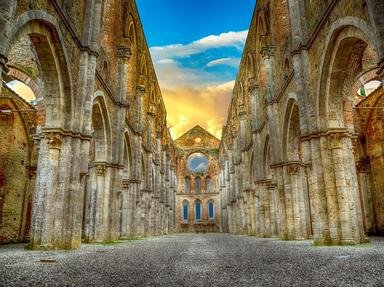Quiz Answer Key and Fun Facts
1. This longest European war began in the early 14th Century. Although it is referred to as the __________, it actually lasted longer.
2. The population of Europe was reduced by over 30 per cent during the 14th century by plague, called the Black Death. Which of these types caused the highest number of fatalities?
3. During the 14th century in England, one positive effect was that the price of bread remained the same across the country for nearly the entire century. What was the main method used to keep the price steady?
4. The longbow was first used by the English at the Battle of ___________, which took place in 1340.
5. As the century was getting underway, in 1303, a conflict between Pope Boniface VIII by agents of King Philip IV of France led to Boniface being kidnapped. Shortly after he was released, he died of shock, and a French Pope was elected. Too afraid to go to the Holy See in Rome, he set up a separate papal court in this French city.
6. The Knights Templar, a military order of monks, also met their doom early in the 14th Century. What was the main reason King Philip IV had their members arrested and their property seized in 1307?
7. How many people died in Europe from the Black Death in all its forms?
8. Which European cities did NOT create new universities during the onslaught of the Black Death to preserve knowledge and learning?
9. What did serfs, laborers and other workers demand during the 14th century as their populations shrank, and workloads rose tremendously?
10. As if all this catastrophe was not enough, in 1303 a period of climate change ushered in cold conditions, reducing the length of growing seasons and freezing over bays, rivers and lakes for months at a time, that persisted until 1700. This climate anomaly is known as the _________ Ice Age.
Source: Author
StarGaGa
This quiz was reviewed by FunTrivia editor
bloomsby before going online.
Any errors found in FunTrivia content are routinely corrected through our feedback system.

